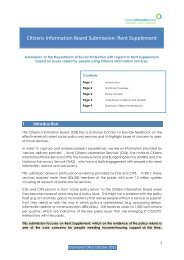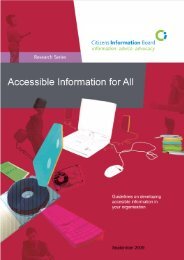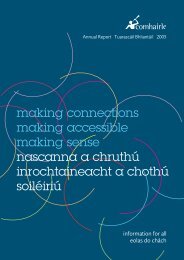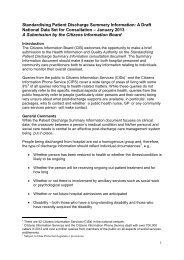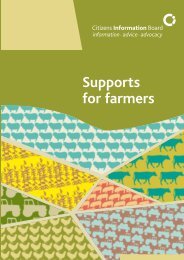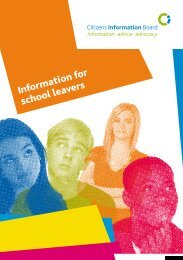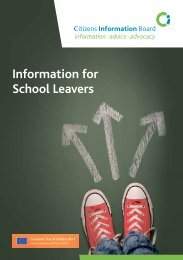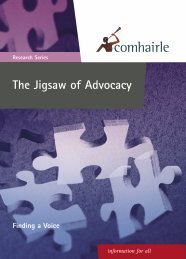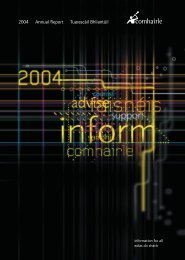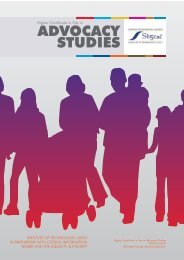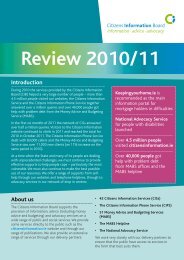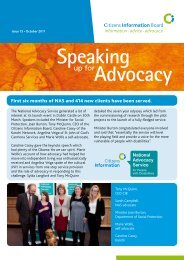Review of Sign Language Interpretation Services and Service ...
Review of Sign Language Interpretation Services and Service ...
Review of Sign Language Interpretation Services and Service ...
- No tags were found...
You also want an ePaper? Increase the reach of your titles
YUMPU automatically turns print PDFs into web optimized ePapers that Google loves.
5.2.1 Linguistic approachIn all <strong>of</strong> the countries included in this review, there is recognition that the Deafcommunity is a linguistic minority whose needs can be described in terms <strong>of</strong> ashared language <strong>and</strong> culture, rather than in terms <strong>of</strong> deafness, i.e. an inability tohear. The Deaf community worldwide, represented through the World Federation<strong>of</strong> the Deaf, continues to lobby on the basis <strong>of</strong> Deaf people's linguistic need, <strong>and</strong>is using the new European Human Rights legislation to support this stance.It is generally accepted within the Deaf Community, that in order for progress tobe made in acknowledging the rights <strong>of</strong> Deaf people, there first needs to berecognition <strong>of</strong> the country's sign language. The country most admired in thisregard has been Finl<strong>and</strong>, where Finnish <strong>Sign</strong> <strong>Language</strong> (FSL) has been <strong>of</strong>ficiallyrecognised in legislation since 1995, <strong>and</strong> Deaf people have the right to use FSL astheir language <strong>of</strong> choice <strong>and</strong> to access interpreting services. This has led toservices that are government funded, with each Deaf person being allocated aminimum number <strong>of</strong> interpreting hours (currently 120 per year), which can beused as the Deaf person chooses. Recognition <strong>of</strong> FSL as a language has also led tobilingual education being provided to Deaf children as a right, with parents able toreceive free tuition in FSL.In New Zeal<strong>and</strong>, recognition <strong>of</strong> NZSL is still going through parliament. TheHonourable Ruth Dyson, Minister for Disability Issues, addressed parliament inApril 2004 <strong>and</strong> pointed out that:“The immediate effect <strong>of</strong> this Bill, once it has passed into law, will be to providepeople with the right to use NZ <strong>Sign</strong> <strong>Language</strong> in any legal proceedings,including court.”This judgement will enable a rollout <strong>of</strong> development in provision, as the cabinethas also agreed to look at ways to improve access to NZSL in education, health,employment, public broadcasting, <strong>and</strong> access for Maori Deaf people. There is alsoa commitment to provide access to government services <strong>and</strong> information in NZSL,wherever practicable.The <strong>of</strong>ficial recognition <strong>of</strong> BSL in Engl<strong>and</strong>, Scotl<strong>and</strong> <strong>and</strong> Wales (2003) <strong>and</strong> parallelrecognition <strong>of</strong> BSL <strong>and</strong> ISL in Northern Irel<strong>and</strong> (2004) was the first significantpublic policy step in the UK which identified sign language users as a languageminority rather than as a disability group.5.2.2 Disability approachIn Engl<strong>and</strong> (<strong>and</strong> the rest <strong>of</strong> the UK) traditionally, deafness has been regarded as amedical disability, with educational <strong>and</strong> welfare systems <strong>and</strong> related legislation<strong>and</strong> services (which include interpreting) put in place to reflect this perspective.Examples <strong>of</strong> this can be found in the National Assistance Act, 1948, ChronicallySick <strong>and</strong> Disabled Persons Act 1970, Mental Health Act 1983, Disabled PersonsAct 1986, Police <strong>and</strong> Criminal Evidence Act 1984 (Codes <strong>of</strong> Practice), Access toWork (Job Centre Plus Scheme). Responsibility for providing access under this<strong>and</strong> other legislation can lie with government agencies, local authorities or otherservice providers. A recent example <strong>of</strong> this approach <strong>and</strong> associated legislation ispage 86 • <strong>Review</strong> <strong>of</strong> <strong>Sign</strong> <strong>Language</strong> <strong>Interpretation</strong> <strong><strong>Service</strong>s</strong> <strong>and</strong> <strong>Service</strong> Requirements in Irel<strong>and</strong>



